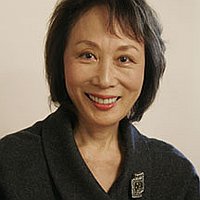Take a look at the image below:

Do you see the gray blobs? Those gray blobs are tricks of the eye and don’t really exist. This illusion is known as the Herrmann Grid. Why do I show you this? Because I think of the grid every time I write a screenplay.
Let me explain…
As Americans, our perceptions of the world (and ourselves) are all wrong. I once gave a talk to a group of high school students and gave them the “if the world were 100 people quiz.” I won’t go into it here because most of you have gotten the forward at one point or another but the majority of the students didn’t realize there were so many people of color in the world.
Why? Because that’s not who they see on television or in movies. (I’m not going to argue that Hollywood or television is racist. I don’t think they are. To me, it’s all about the money. But that debate is a different article.)
One of the first things I realized as a writer was that if I didn’t give a character a race, it was assumed that he/she was Caucasian. That’s not a bad thing per se, but as an Asian American it was an eye opening realization. I started to think about my favorite characters from books and was startled to find that I had imagined they were all white (unless they had ethnic specific name). But why couldn’t they be Latino, Asian, or black?
We all do this. Don’t believe me? Read this sentence:
“Tom, 20, a muscular man in swim trunks, and Marcia, 18, beautiful in a bikini, are on vacation when a group of international thugs kidnap them.”
What do Tom and Marcia look like? Most would imagine Tom and Marcia like this:

But why can’t they look like this?

And this also applies to other sectors of our society. If I say undocumented worker, most imagine:

But an undocumented worker could also look like this:

What about a CEO? What does a CEO look like? Most imagine a CEO looks like this:

But a CEO can also look like this:

This is why being overt about the name/age/gender/sexual orientation/class of your character is so important and the only way is to ensure color/diversity is added to your projects and to the world of popular culture. This goes for books, comic books, short stories, anime, films, television, and even in the stories you tell your friends.
So in the end, the Hermann Grid reminds me to be cognizant of what I put out there in the world because I have the power to change and/or reinforce perceptions.
I’m going to be teaching an introduction to screenwriting class at Visual Communication here in Los Angeles this fall. If you’ve always wanted to write a screenplay, what are you waiting for? This class is limited to 15 students. For more information, click on the link.
- Excited
- Fascinated
- Amused
- Disgusted
- Sad
- Angry








